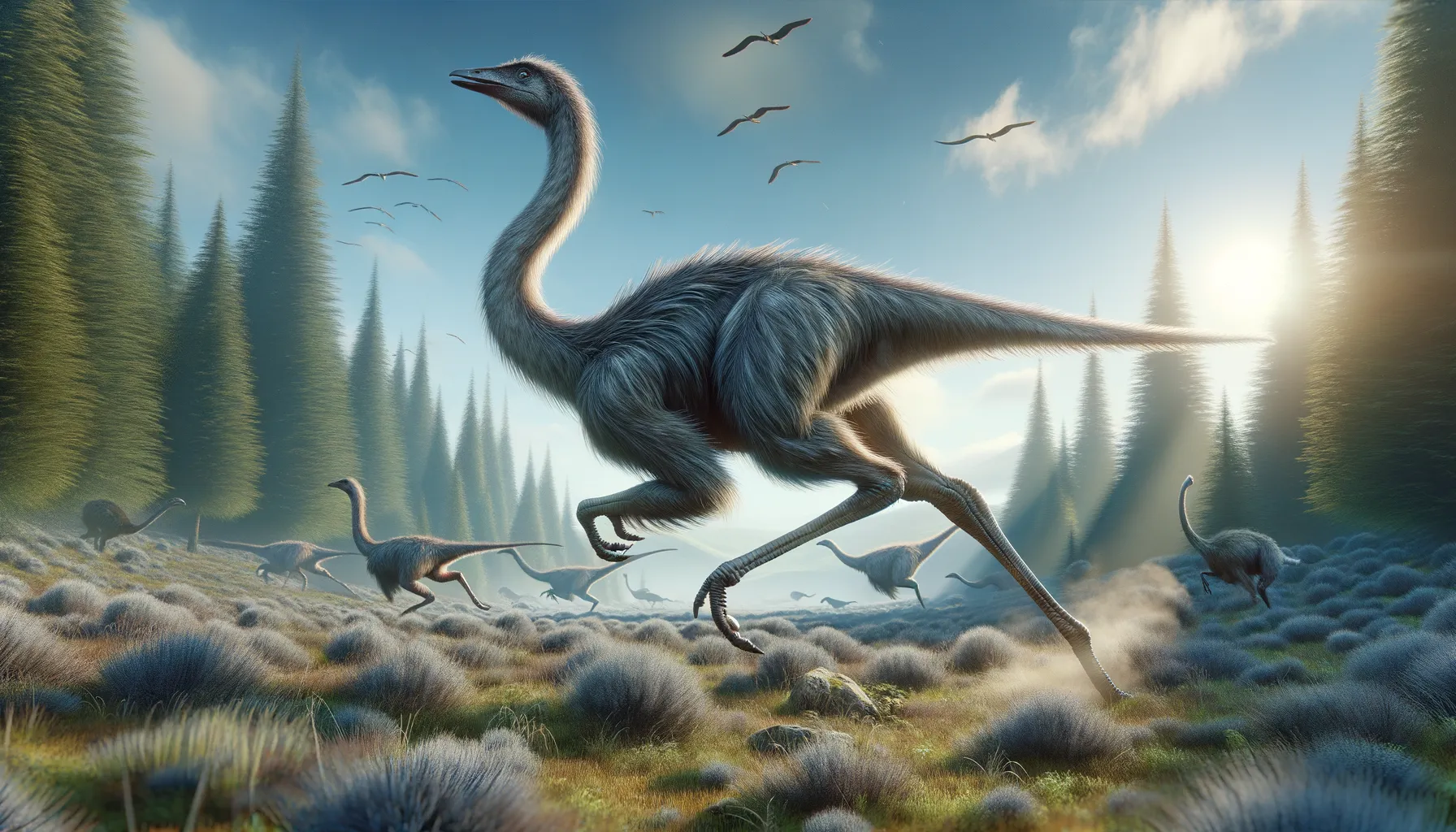
Aepyornithomimus
Swift runner from the ancient Cretaceous age.
Period
Cretaceous
Length
Roughly 5 meters in length.
Height
Approximately 2 meters tall.
Weight
Around 200 kilograms.
The Aepyornithomimus was a swift and agile dinosaur resembling modern-day ostriches. It inhabited the late Cretaceous period and was known for its long legs and light body, which made it an efficient runner. This theropod dinosaur is believed to have had a varied diet, possibly omnivorous. Its fossils provide insight into the evolutionary link between dinosaurs and birds, shedding light on their adaptive features.
Diet
Aepyornithomimus was likely omnivorous, feeding on both plants and small animals. Its beak-like mouth suggests it could have consumed a range of foods, aiding its survival in various environments.
Hunting
While not a predatory hunter like large theropods, Aepyornithomimus likely foraged for food using its keen eyesight to spot small prey. Its speed and agility would have helped it catch insects or small animals when needed.
Environmental challenges
Aepyornithomimus faced challenges such as climate changes affecting vegetation and water sources. Predation by larger dinosaurs also posed a constant threat. Competition for food resources with other herbivores was another significant challenge during its period.
Speed
Fast, agile runner with long limbs.
Lifespan
Estimated around 20 to 30 years.
First discovery
First discovered in the Gobi Desert in the 1980s.
Fun Facts
- Aepyornithomimus was a dinosaur that lived during the Late Cretaceous period.
- Its name means 'Aepyornis mimic,' referring to its similarity to the extinct giant bird Aepyornis, also known as the elephant bird.
- Despite its name, Aepyornithomimus was not a bird but was a theropod, part of the group that eventually gave rise to birds.
- Aepyornithomimus was likely a fast runner, with long legs adapted for speed.
- Fossils of Aepyornithomimus have been found in China, providing important insights into theropod evolution in Asia.
- This dinosaur was probably an omnivore, feeding on a variety of plants and small animals, similar to how some modern birds forage.
- Aepyornithomimus is part of the ornithomimid family, often nicknamed 'ostrich dinosaurs' due to their bird-like appearance.
Growth and Development
Aepyornithomimus exhibited rapid growth during its juvenile stages, reaching half its adult size within a few years. This rapid development likely helped it evade predators. Its lightweight bones and muscle development were crucial for its running ability, completing its adult form by mid-teens.
Habitat
Aepyornithomimus thrived in open and semi-arid environments with sparse vegetation. Such habitats allowed it to utilize its speed for foraging and escaping predators. Proximity to water sources would have been vital for its survival, providing hydration and occasional aquatic plants to feed on.
Interaction with other species
Aepyornithomimus coexisted with various herbivorous and carnivorous dinosaurs, often competing for resources in its environment. While it avoided confrontations with large predators, it might have lived in loose groups to enhance foraging efficiency and predator vigilance.
Natural lifespan
Its natural lifespan was likely around 25 years, given adequate conditions.
Reproduction
The dinosaur likely laid eggs in nests, similar to modern birds. Females would choose secure locations, often sheltered by vegetation, to protect their young from predators. Parental care may have included guarding the nest and possibly tending to hatchlings after birth.
Social behaviour
Aepyornithomimus may have exhibited some degree of social behavior, gathering in small flocks to enhance foraging and provide protection. Such social structures would enable quick communication and group responses to threats, improving survival chances.
Fossil locations
Fossils of Aepyornithomimus have been primarily discovered in the Gobi Desert of Mongolia. These sites have provided crucial insights into the dinosaur's anatomy and lifestyle. The well-preserved remains help in understanding the transition from theropod dinosaurs to bird-like creatures.
